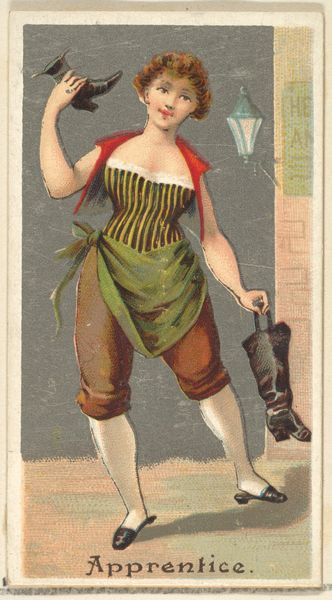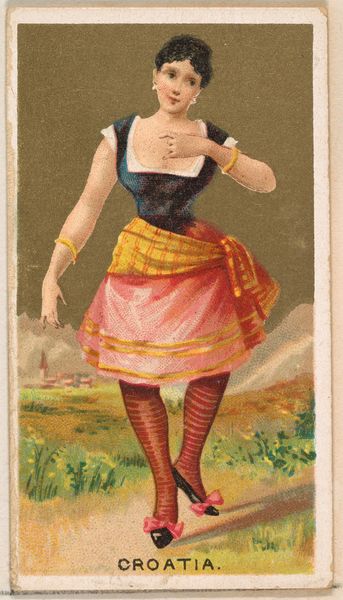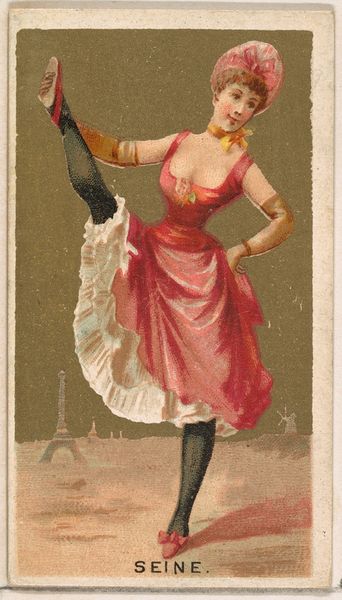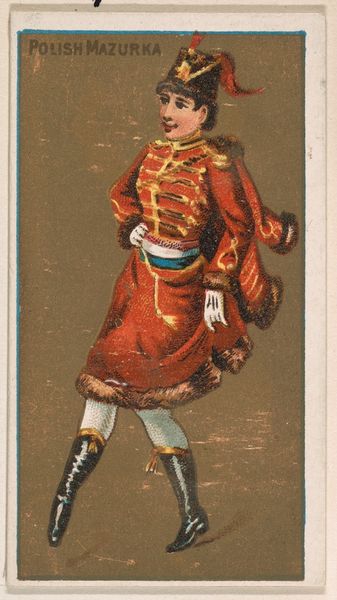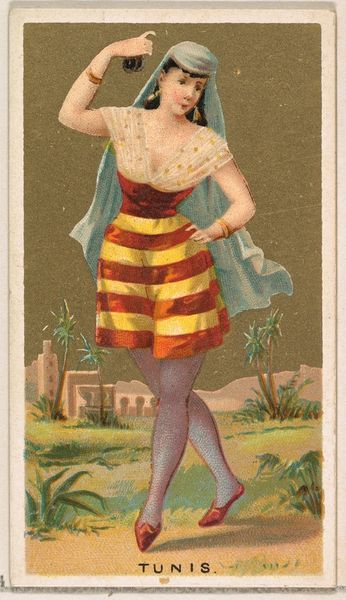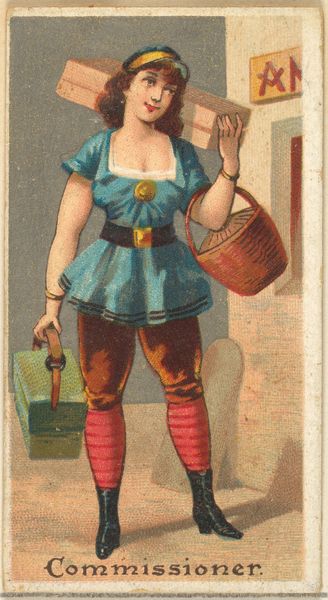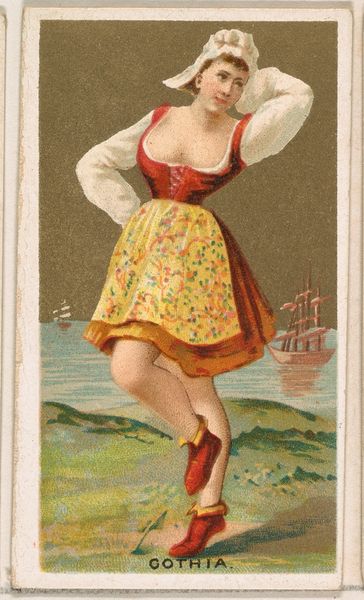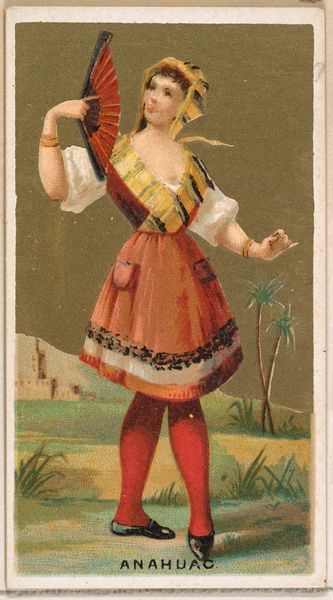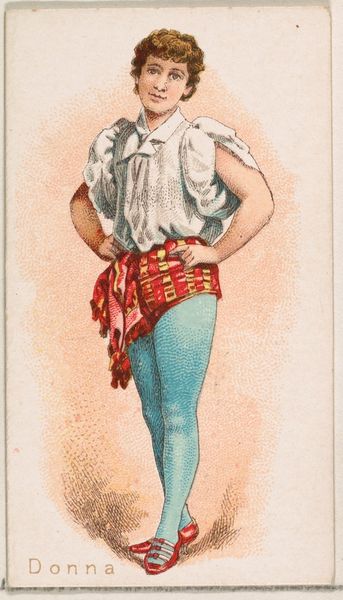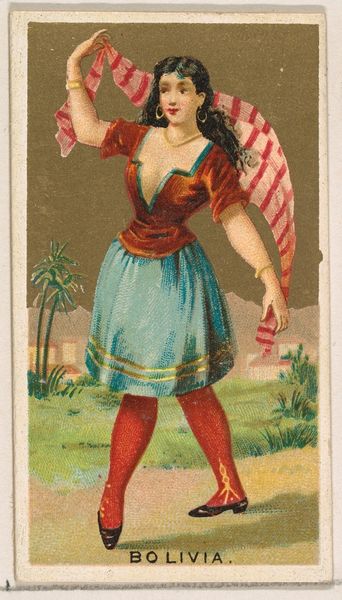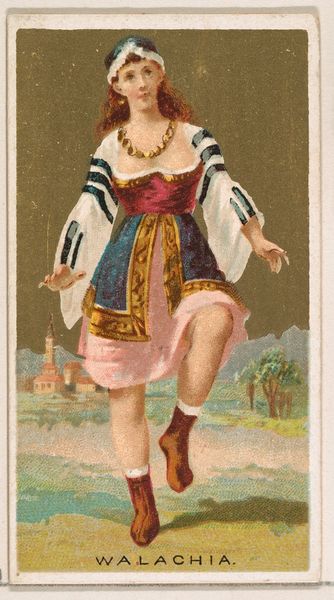
London, from the Dancing Girls of the World series (N185) issued by Wm. S. Kimball & Co. 1889
0:00
0:00
drawing, print
#
portrait
#
drawing
#
art-nouveau
# print
#
caricature
#
figuration
#
genre-painting
Dimensions: Sheet: 2 11/16 × 1 1/2 in. (6.8 × 3.8 cm)
Copyright: Public Domain
Curator: This delightful piece is entitled "London, from the Dancing Girls of the World series (N185)", dating back to 1889 and produced by Wm. S. Kimball & Co. It's currently housed here at the Metropolitan Museum of Art. Editor: My first impression is of a rather mischievous energy! There's something theatrical and slightly exaggerated about the figure's pose and clothing, almost like a playful caricature. Curator: Indeed. It's fascinating how these trade cards functioned within a burgeoning consumer culture. Tobacco companies, in particular, used them as collectibles to boost sales, reflecting and shaping societal views of women and global cultures. This series, with its implied "dancing girls," certainly plays into exoticized tropes. Editor: Absolutely. Let's look closely at the production itself. These were mass-produced prints, tiny affordable objects circulating widely. What was the cost and labour involved, and what about their wider accessibility? Did they contribute to increased visibility for women at this time, however mediated? And did it impact other areas like textile design or fashion of that era? Curator: I think that is undeniable. Consider also the framing of the figure. The tilt of her head, her attire: equestrian cap and boots. And we might want to consider if there is a narrative intended by the building visible in the background and how all the clues work together with the titling that references both place and presumed social role. It prompts questions about social mobility, visibility, and the male gaze inherent in their production and consumption. Editor: It raises questions around how labor and manufacturing intersects with depictions of gender and identity in visual culture, it complicates easy narratives of empowerment through this image. Are these the idealized materials that would attract female clients or what their partners would admire. The print, though seemingly frivolous, offers insights into production, commodity fetishism and Victorian attitudes. Curator: It also reminds us of the value of unpacking assumptions behind these seemingly innocuous images, prompting broader conversations about representation, gender, and labor within the context of Victorian society. Editor: Exactly, a reminder that even the smallest ephemeral artifacts can offer valuable insight into our relationship to the social and material structures of the world around us.
Comments
No comments
Be the first to comment and join the conversation on the ultimate creative platform.
